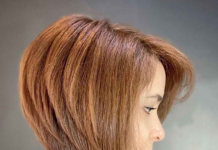It’s true that diamonds are forever – and they’re also way more useful than you may think. While diamonds are most famously used in jewelry, their applications are actually quite diverse. Both in the present and historically, diamonds have been involved in various applications across many industries. Here, we take a look at some of the many unusual uses of diamonds that aren’t related to rings or other jewelry items.
Lab created diamonds are used in engagement rings and diamond necklaces, but they have other uses than just jewelry. It would be surprising if I told you that diamonds are also found in everyday objects such as cutting tools, missile parts, and even high-tech products like semiconductors.
What Are Lab Created Diamonds
In simple terms, lab created diamonds are produced in a lab by mimicking the conditions of naturally occurring diamonds. By simulating the same or a distinct natural process in laboratories, lab created diamonds are produced in a matter of weeks. Lab grown diamonds are comparable to natural diamonds in terms of their chemistry and physical makeup. The big difference is that lab grown diamonds cost a lot lesser.
With loose lab created diamonds, you can design and customize your new earrings and pendants just as you like and wear it with pride; which often isn’t the case with mined diamonds. They possess the same reflecting qualities as mined diamonds. But as they are more widely available and less expensive than genuine diamonds as they are not seen as being as luxurious.
Chemical vapor deposition (CVD) is the most used technique for creating synthetic diamonds. In this method, methane gas is used to harvest the carbon atoms that collect over the “seed” to mimic the covalent connections between the carbon atoms. A thin layer of diamond is used as the “seed.”
Let us now delve into the lesser-known and unusual uses of diamonds.
- Used in Facial Peels
Facial peels with diamond powder are effective ways to exfoliate dead skin cells on your face. These peels rejuvenate your skin and restore its youthfulness. The best part about diamond facial peels is that you can use them more than once. Unlike chemical peels which only get applied once, diamond facial peels are free from any adverse reactions.
Facial peels using diamond powder mostly have no negative side effects. It is a safe alternative to chemical peel treatments. Mostly ideal for sensitive skin types, it will leave you with smooth, clean skin after each treatment.
- Used in Speaker Domes
Most people who have ever had a run-in with a domed speaker, probably know that they’re made of small pieces of paper and plastic. But what most people don’t know is that for decades now, dome speakers have been manufactured with actual diamonds.
Tiny little bits of loose lab created diamonds are mixed into tiny little bits of paper and plastic to create some very large (and expensive) speakers. Speakers need to amplify sound from all directions in all different frequencies at once. Diamonds help the dome do that.
- Used in Construction Work
The small particles left behind by a blade with a rough surface—such as when glass is cut—are much too small to be removed by normal sweeping or vacuuming methods. They end up accumulating in your carpet and furniture’s fabric coverings over time.
Like all hard materials, diamonds also are very durable. In fact, it is considered the hardest. This makes it a great addition to construction equipment. Just like steel saws are used to cut through metal, diamond-coated saw blades are used to cut concrete and stone. The hardness of the diamond keeps it from wearing out quickly and provides durability that lasts for years.
- Used to Manufacture Semiconductors
Industrial diamond is a synthetic form made in a lab. In electronics manufacturing, it’s used to grind and polish silicon wafers. The wafers are then etched with chemicals to produce computer chips.
The hardness, durability, and heat conductivity of lab created diamonds make them ideal for grinding away layers of semiconductor materials. It can even be used as an abrasive polish for glass or metal products.
Thanks to their hardness and high-temperature resistance, industrial diamonds don’t need to be recycled or refinished after each use. They can last for several years before needing replacement or additional processing.
- Used in Optics
Many people don’t know that a diamond is not only a perfect crystal but also a good reflector. As such, it has found wide use in optics. For instance, when you look at a pair of glasses with transparent lenses, there’s a good chance that these lenses are made from diamond.
Diamond is used in optic materials because it is an exceptional reflector and can be used to make many optical instruments like telescopes and microscopes. In fact, some high-end scopes have triplets constructed from different types of crystals on either side with a single piece of diamond right in between them. This ensures the maximum possible reflection.
- Used to Deliver Radiation Therapy
When used in a hospital setting, doctors use diamond particles to bombard diseased cells with radiation. The particles are extremely tiny (usually about 1100th of a millimeter), which allows them to travel through tissues easily.
The particles attach to specific cells that have been exposed to radiation, and because they bind only to specific cells, they’re less likely to damage healthy tissue than conventional cancer therapies.
- Used as Industrial Cutting Tools
Diamonds are one of nature’s strongest materials. Diamond-coated blades are used to reduce friction and improve edge retention on industrial cutting tools that run 24 hours a day and cut through tough, abrasive materials like metal alloys or concrete.
Although replacing diamond blades can be costly, it hasn’t stopped the industry from using them. Moreover, the diamond saw industry itself is expected to reach $9K million by 2027.
The Bottom Line
We have listed 7 lesser-known uses of diamonds. It is clear that diamonds have many uses and can be recycled or reused in so many ways. However, you should note that diamonds are expensive and you should use them responsibly because they are a very limited resource.
Therefore, make sure to buy only what you need and to use diamonds carefully if you choose to do so. Whether your requirement is for jewelry or specific tools, consider lab created diamonds over mined ones. Lab created diamonds are heavily used in the optics, semiconductor, and cosmetics industries.
This precious stone lives up to the adage diamonds are forever by its usage across industries and of course, as the most sought-after jewelry adornment.











